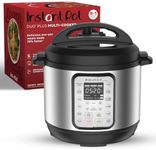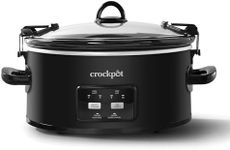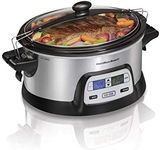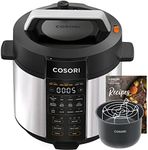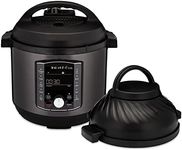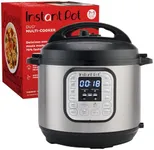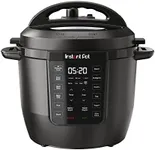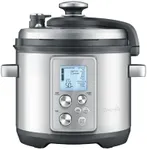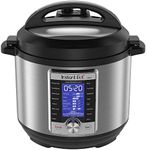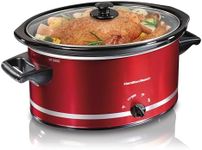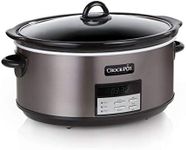Buying Guide for the Best Non Toxic Slow Cooker
Choosing a non-toxic slow cooker is a great way to ensure your meals are both delicious and safe for your health. When shopping for a slow cooker, it's important to look beyond just the cooking features and pay close attention to the materials and safety standards. Understanding the key specifications will help you select a model that fits your cooking habits, kitchen space, and health priorities. Here’s what you should know to make an informed choice.Cooking Pot MaterialThe cooking pot is the part of the slow cooker that comes into direct contact with your food, so its material is crucial for health and safety. Common options include ceramic, stainless steel, and sometimes non-stick coated metal. Ceramic is popular for being naturally non-toxic and free from harmful chemicals, but it can be heavy and may chip if dropped. Stainless steel is durable and also considered safe, but it can sometimes react with acidic foods. Non-stick coatings can make cleaning easier, but some may contain chemicals you want to avoid. When choosing, think about your preference for ease of cleaning, weight, and your sensitivity to certain materials. If you want to avoid all chemicals, opt for uncoated ceramic or stainless steel.
Lid MaterialThe lid helps trap heat and moisture, and it’s usually made of glass or plastic. Glass lids are preferred for non-toxic cooking because they don’t leach chemicals and allow you to see your food as it cooks. Plastic lids are lighter but may contain chemicals that could leach into food, especially at high temperatures. If you prioritize safety and want to avoid any risk of chemical exposure, a glass lid is the best choice.
Certifications and Safety StandardsCertifications like FDA approval or third-party testing for lead and cadmium are important indicators of a slow cooker’s safety. Some ceramics may contain trace amounts of heavy metals, so look for products that specifically state they are free from lead, cadmium, and other harmful substances. Checking for these certifications gives you peace of mind that the cooker meets strict safety standards. If you have health concerns or are cooking for children, always prioritize models with clear safety certifications.
Temperature SettingsTemperature settings determine how much control you have over the cooking process. Most slow cookers offer low, high, and sometimes a keep-warm setting. Some advanced models allow for more precise temperature control. If you plan to cook a variety of dishes or want to leave food unattended for long periods, having multiple settings can be helpful. For basic stews and soups, simple low and high settings may be enough, but for more versatility, look for models with more options.
Size and CapacitySlow cookers come in various sizes, usually measured in quarts or liters. Smaller models (around 2-4 quarts) are great for singles or couples, while larger ones (6-8 quarts) are better for families or meal prepping. Think about how many people you usually cook for and how much counter or storage space you have. Choosing the right size ensures you don’t waste energy or space, and your meals cook evenly.
Ease of CleaningA slow cooker that’s easy to clean will save you time and effort. Removable pots and dishwasher-safe parts are features to look for. Some materials, like uncoated ceramic, can be more challenging to clean if food sticks, while stainless steel and some non-stick surfaces are easier to wipe down. Consider your willingness to hand-wash versus using a dishwasher, and pick a model that matches your cleaning preferences.
